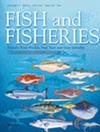Panmixia in Anguilla Eels: A Meta‐Analysis
IF 6.1
1区 农林科学
Q1 FISHERIES
引用次数: 0
Abstract
Analysis of population genetic structure can contribute to our understanding of the ecology and evolution of organisms and inform conservation and resource management policies.安圭拉鳗的泛菌群:一项Meta分析
种群遗传结构的分析有助于我们对生物生态学和进化的理解,并为保护和资源管理政策提供信息。安圭拉是淡水鳗鱼的一个属,包含19个分类群(种和亚种),由于扩散障碍、气候变化、有机和金属污染物污染、栖息地退化和过度捕捞,其中许多分类群的数量正在下降。由于一些安圭拉物种是重要的渔业资源,因此确定物种的遗传结构对于了解渔业种群/管理单位的边界并帮助其适当管理至关重要。我们对安圭拉属分类群遗传结构的研究进行了文献综述,并基于从66项研究的表格和/或图表中提取的成对遗传分化值的平均值和标准差进行了meta分析。我们使用亚组和元回归来评估遗传标记、分化测量、样本量和采样范围对检测到的遗传分化程度的影响。在安圭拉(Anguilla marmorata)类群中,除安圭拉(Anguilla marmorata)外,其他类群均支持panmixia。然而,一些分类群仍未得到充分研究,也可能表现出群体遗传结构。未来的研究应集中在填补样本量和样本代表性方面的空白,以提供更准确的种群遗传结构估计,并提高我们对这一神秘群体的认识。
本文章由计算机程序翻译,如有差异,请以英文原文为准。
求助全文
约1分钟内获得全文
求助全文
来源期刊

Fish and Fisheries
农林科学-渔业
CiteScore
12.80
自引率
6.00%
发文量
83
期刊介绍:
Fish and Fisheries adopts a broad, interdisciplinary approach to the subject of fish biology and fisheries. It draws contributions in the form of major synoptic papers and syntheses or meta-analyses that lay out new approaches, re-examine existing findings, methods or theory, and discuss papers and commentaries from diverse areas. Focal areas include fish palaeontology, molecular biology and ecology, genetics, biochemistry, physiology, ecology, behaviour, evolutionary studies, conservation, assessment, population dynamics, mathematical modelling, ecosystem analysis and the social, economic and policy aspects of fisheries where they are grounded in a scientific approach. A paper in Fish and Fisheries must draw upon all key elements of the existing literature on a topic, normally have a broad geographic and/or taxonomic scope, and provide general points which make it compelling to a wide range of readers whatever their geographical location. So, in short, we aim to publish articles that make syntheses of old or synoptic, long-term or spatially widespread data, introduce or consolidate fresh concepts or theory, or, in the Ghoti section, briefly justify preliminary, new synoptic ideas. Please note that authors of submissions not meeting this mandate will be directed to the appropriate primary literature.
 求助内容:
求助内容: 应助结果提醒方式:
应助结果提醒方式:


